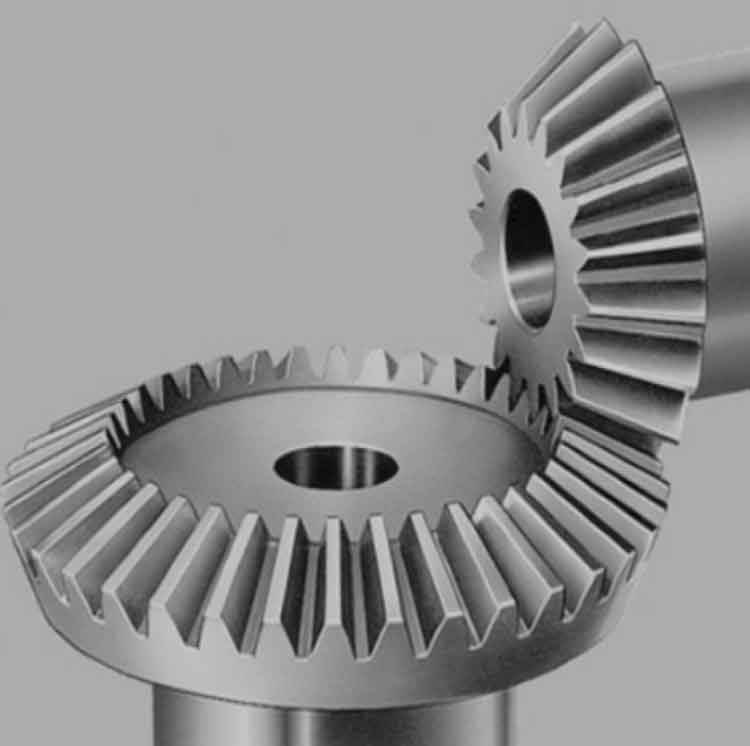Maximizing efficiency and reducing noise are crucial considerations in straight bevel gear systems to ensure optimal performance and user satisfaction. Here are some strategies to achieve these goals:

- Proper Gear Design: Careful gear design is essential for maximizing efficiency and reducing noise. Optimize gear parameters such as tooth profile, pressure angle, module, and pitch to minimize frictional losses and noise generation during gear meshing. Utilize computer-aided design (CAD) software and advanced simulation techniques to analyze and fine-tune the gear geometry for optimal performance.
- Surface Finish and Tooth Quality: Ensure the straight bevel gears have a high-quality surface finish to reduce friction and improve efficiency. Implement precision manufacturing processes, such as grinding or honing, to achieve the desired tooth surface smoothness and accuracy. Proper tooth quality, including correct tooth contact pattern and backlash control, helps minimize noise and improve overall performance.
- Lubrication and Maintenance: Effective lubrication is critical for reducing friction and wear, thus improving efficiency and reducing noise in straight bevel gear systems. Select a suitable lubricant with the right viscosity and additives to ensure proper film formation and lubrication between gear teeth. Regularly monitor lubricant condition and perform scheduled maintenance, including lubricant changes and gear inspections, to prevent excessive wear and optimize performance.
- Gear Tooth Alignment: Proper alignment of straight bevel gears is essential for minimizing misalignment-related noise and losses. Ensure accurate shaft alignment and precise positioning of the gears to maintain proper gear meshing and minimize tooth deflection. Misalignment can lead to increased noise, vibration, and decreased efficiency, so it’s important to address any alignment issues promptly.
- Gear Tooth Profile Modification: Applying profile modifications, such as tip relief or crowning, can optimize the tooth contact pattern and reduce noise in straight bevel gear systems. These modifications help distribute the load more evenly across the gear face, minimizing localized stresses and noise generation during operation.
- Material Selection: Choose high-quality materials with excellent mechanical properties and wear resistance for straight bevel gears. The material should have sufficient strength to handle the applied loads and resist wear and fatigue. Selecting the right material, such as through-hardened or carburized steel, can help improve gear efficiency and reduce noise by minimizing friction and wear.
- Vibration Damping and Noise Control: Implement measures to dampen vibrations and reduce noise in straight bevel gear systems. This can include using vibration-absorbing materials, applying sound-deadening coatings, or employing noise isolation techniques in the surrounding structure. By minimizing vibrations and noise transmission, the overall noise level of the gear system can be reduced.
- Proper Assembly and Mounting: Ensure correct assembly and mounting of straight bevel gears to avoid unnecessary misalignments or distortions. Use precision assembly techniques and follow manufacturer’s guidelines to maintain the intended gear geometry and optimize performance. Properly torquing bolts, aligning shafts, and maintaining appropriate clearances are critical for efficient and quiet gear operation.
By implementing these strategies, gear designers and manufacturers can maximize the efficiency and minimize noise in straight bevel gear systems. This leads to improved overall performance, reduced energy consumption, enhanced user comfort, and increased equipment longevity.
